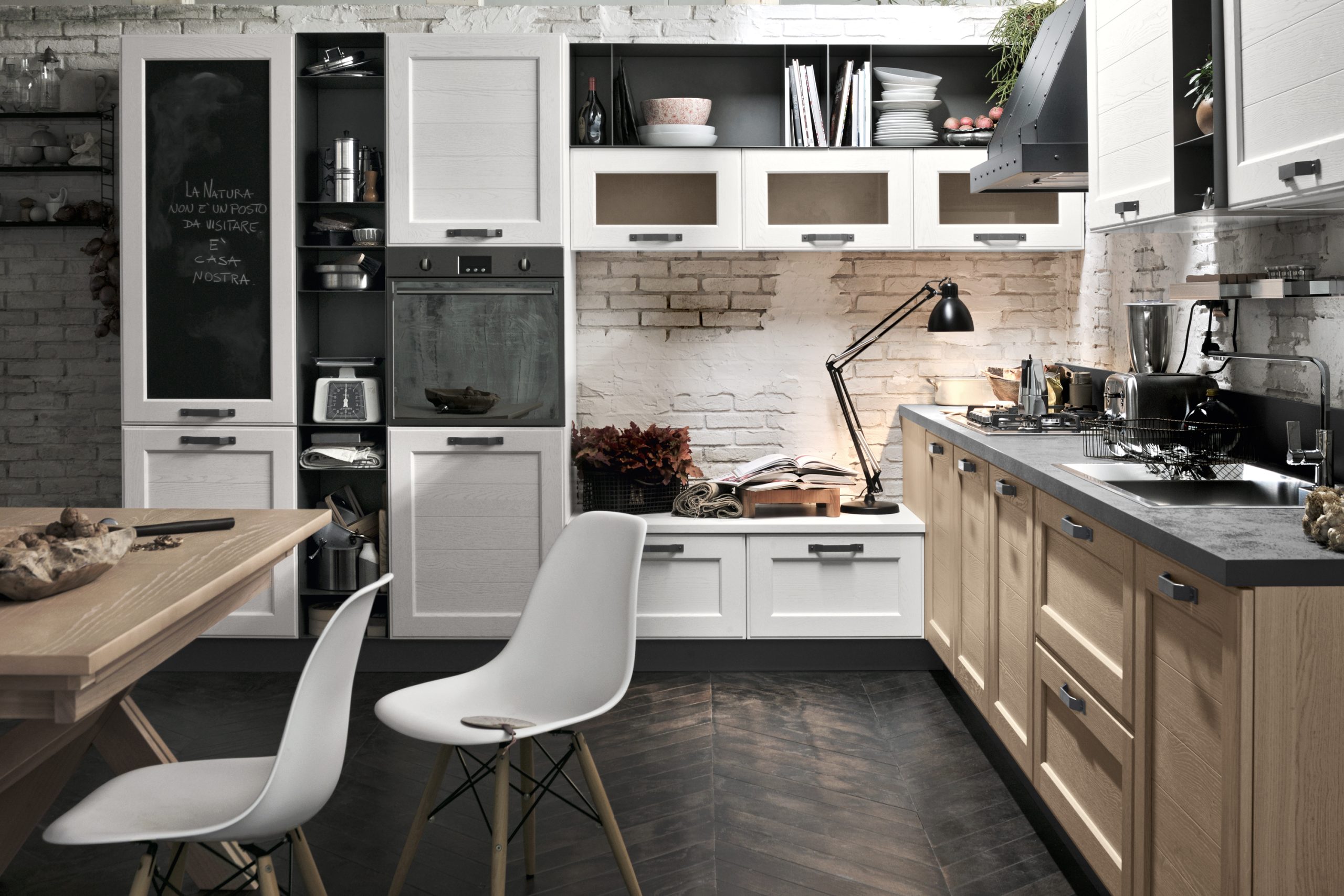Italy, a country celebrated for its rich cultural heritage and diverse landscapes, boasts a culinary and design legacy that is as varied as its regions. This diversity is reflected not only in its cuisine but also in the design aesthetics of its kitchens. In this article, we will explore the influence of regions on Italian kitchen cabinetry, delving into the unique styles that emerge from the warmth of Tuscan traditions to the sleek minimalism of Milanese design.
-
Tuscan Warmth:
- Earthy Tones and Natural Materials: Tuscan kitchens are known for their warm and inviting atmosphere. In Tuscan-inspired cabinetry, you’ll find rich earthy tones like warm browns, deep reds, and olive greens. Natural materials such as rustic woods, often left with a distressed finish, contribute to the timeless and welcoming appeal.
- Ornate Details: Tuscan kitchen cabinets often feature ornate details like carved wood, intricate moldings, and embellished handles. These elements evoke a sense of Old World charm and craftsmanship, creating a kitchen that feels steeped in tradition and familial warmth.
- Open Shelving: To showcase the beauty of Tuscan ceramics, pottery, and colorful dishware, Tuscan kitchens may incorporate open shelving. This not only adds a personal touch but also contributes to the overall sense of openness and airiness.
-
Venetian Elegance:
- Graceful Lines and Timeless Elegance: Venetian kitchens are characterized by their graceful lines and timeless elegance. Venetian-style cabinetry often features a more refined and polished look, with smooth surfaces and subtle detailing. Neutral tones, such as creams and light grays, create an atmosphere of sophistication.
- Glass and Mirrors: In Venetian design, the use of glass-fronted cabinets and mirrors is prevalent. These elements add a touch of glamour, reflecting light and creating an illusion of space, making Venetian kitchens feel both luxurious and airy.
- Intricate Hardware: Venetian cabinet hardware tends to be more understated compared to other regions. Handles and pulls may feature intricate yet subtle designs, contributing to the overall refined aesthetic of the cabinetry.
-
Milanese Minimalism:
- Sleek Lines and Modern Simplicity: Milan, known as Italy’s design capital, has a reputation for sleek and modern aesthetics. Milanese kitchen cabinets embrace clean lines and minimalist design, often favoring a monochromatic color palette. Cabinets are characterized by their simplicity and functionality, reflecting the city’s contemporary style.
- High-Gloss Finishes: Milanese kitchens often feature high-gloss finishes on cabinet surfaces, adding a reflective quality to the space. This choice enhances the perception of light and space, contributing to the overall modern and sophisticated atmosphere.
- Hidden Appliances: In line with a minimalist approach, Milanese kitchen design often incorporates hidden or integrated appliances. Concealed behind seamless cabinet panels, appliances become a part of the overall aesthetic, maintaining the sleek and uncluttered look.
-
Sicilian Vibrancy:
- Bold Colors and Mosaic Patterns: Sicilian kitchens are renowned for their vibrant and eclectic style. Sicilian-inspired cabinetry embraces bold colors such as sunny yellows, fiery reds, and ocean blues. Mosaic patterns and intricate tilework are often incorporated, creating a lively and dynamic atmosphere.
- Open and Closed Storage: Sicilian kitchens may feature a combination of open and closed storage. Open shelving allows for the display of colorful ceramics and decorative items, while closed cabinets offer practical storage solutions. This blend of form and function captures the essence of Sicilian design.
- Mixed Materials: Sicilian design often involves the use of mixed materials. Wooden cabinets may be paired with colorful ceramic tiles or mosaic patterns, creating a visually rich and eclectic look that mirrors the vibrant spirit of Sicily.
-
Roman Classicism:
- Timeless Elegance and Symmetry: Roman kitchens draw inspiration from classical design principles. Roman-style cabinetry often features timeless elegance and symmetry. Neutral color palettes, such as whites and creams, contribute to a sense of classicism and sophistication.
- Architectural Details: Roman kitchens may incorporate architectural details such as columns, moldings, and arched openings. These elements add a sense of grandeur to the cabinetry, reflecting the city’s historical and architectural significance.
- Marble Accents: In keeping with the city’s love for marble, Roman kitchens may feature marble accents, especially in countertops or backsplashes. This luxurious touch adds to the overall sense of opulence and refinement.
Conclusion:
The regional diversity of Italy is a treasure trove of design inspiration, and this diversity is vividly expressed in the styles of Italian kitchen cabinetry. From the warmth of Tuscan traditions to the sleek minimalism of Milanese design, each region contributes a unique flavor to the culinary and design landscape of Italy. Whether you prefer the timeless elegance of Roman classicism or the vibrant eclecticism of Sicilian design, the rich tapestry of Italian regional styles offers a wealth of possibilities for creating a kitchen that not only reflects your personal taste but also pays homage to the cultural heritage of this extraordinary country.

